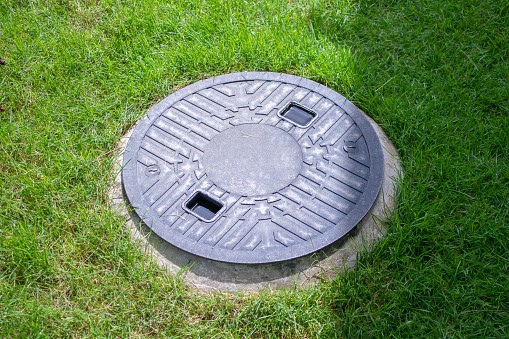In rural and suburban areas where public sewer systems aren’t available, septic systems are essential for enjoying modern plumbing conveniences like toilets, showers, and dishwashers. A well-functioning septic system treats and disposes of wastewater in a sanitary and efficient manner, making it essential to the health and safety of humans and the surrounding environment.
One critical element of the septic system process is called the “biomat.” Most homeowners are unfamiliar with this term, but it significantly impacts your septic system’s efficiency and effectiveness.
What is Biomat in a Septic System?
Septic system biomat, also known as the biomaterial layer, is a naturally occurring, gelatinous substance that forms in the soil under and around the septic system drain field. It consists largely of anaerobic bacteria that don’t require a lot of oxygen to survive and is an essential component of the septic ecosystem. The primary function of the biomat is to filter and treat wastewater, preventing viruses, pathogens, and diseases from polluting the environment.
As wastewater flows through the septic system and enters the soil, it passes through the biomat layer, which serves as a biological filter. The living bacteria within the biomat break down and consume organic materials in the wastewater, converting them into simpler compounds that the soil can safely absorb. This process removes harmful contaminants and promotes gradual percolation to prevent over-saturating the soil.
How Long Does It Take for Biomaterials to Form?
The formation of the septic system biomat is a gradual process, occurring over time as the bacteria and organic matter accumulate. With every dishwasher cycle, shower, and toilet flush, you introduce new organic bacteria, which affect the septic ecosystem.
Plus, when the tank is pumped of all internal contents, the system takes about one to three weeks to regain the proper bacteria levels. The precise rate of biomaterial formation depends on the size and usage of the septic system, the soil type, and the presence of chemicals in the wastewater.
How to Maintain the Proper Biomat Levels
Homeowners can take several steps to ensure the biomat layer remains at an appropriate thickness. Here are some tips to try:
- Regularly inspect and pump the septic tank: Scheduling routine septic tank inspections and pumping every three to five years prevents the accumulation of sludge and other organic materials, reducing the strain on the biomat layer.
- Use water efficiently: Implementing water-saving practices reduces the volume of wastewater entering the septic system and decreases the burden on the biomat. Tactics include using water-efficient appliances and fixtures, repairing plumbing leaks, and spreading laundry/dishwasher loads throughout the week
- Avoid harsh chemicals: Bleach and other chemicals harm the beneficial bacteria within the septic ecosystem. Limit their use to maintain proper biomat levels.
- Landscape wisely: Planting trees and shrubs away from the septic system drain field prevents root intrusion, which can damage the biomat layer and the septic system itself.
- Use septic tank additives: The right additives applied at the proper time can boost the biological response within the septic system. However, using the wrong additives at the improper time can have detrimental effects. Work with a professional to help you choose the best septic tank additives and get the timing right.
What Happens if the Biomat Layer Becomes Too Thick?
As the septic system operates, the biomat layer naturally grows thicker. If it becomes excessively thick, the biomat can impede the drainage of effluent wastewater, leading to various issues. For example:
- A clogged biomat can cause wastewater to back up into your home or pool on the surface of the drain field, causing foul odors and unsanitary conditions.
- An overly thick biomat layer may allow effluent wastewater to rise and seep into the soil above the biomat, thus bypassing a critical filtration layer. This raises the risk of groundwater contamination if the wastewater is not filtered by other means.
In cases where the biomat layer becomes too thick, it may be necessary to perform septic system remediation. This process can involve repairing or replacing damaged components, adding supplemental biomaterial to restore the proper bacteria balance, or replacing the drain field. Work with a septic system professional to assess the situation and determine the best course of action.
Schedule Septic System Services in San Francisco
At Trinity Liquid Waste, we pride ourselves on offering comprehensive septic system services for residences and businesses in the San Francisco Bay Area. Our experienced technicians are committed to customer care and effective solutions for all your septic system needs. From routine inspections and pumping to complex system repairs and replacements, Trinity Liquid Waste is the reliable choice for keeping your septic system up and running. Contact us today at 510-874-6489 to schedule an appointment or learn more about our services.

